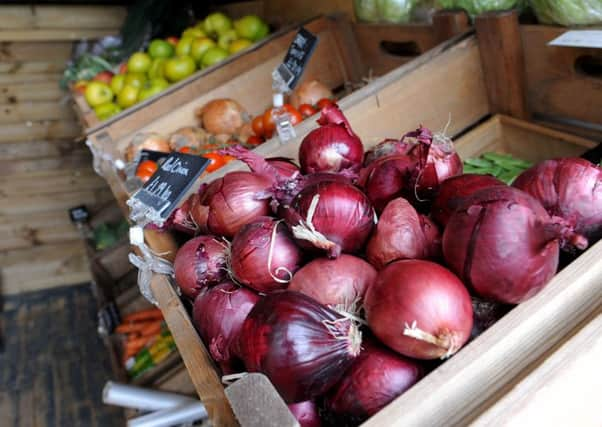Scots food and drink firms upbeat on prospects


Figures released today in Bank of Scotland’s fourth annual snapshot of the industry indicate an increasing focus on exports and innovation following a record year for Scottish food sales abroad. The sector, which currently employs about 360,000 people, expects to create as many as 14,000 additional jobs by 2020.
Over that same period, producers forecast an average 19 per cent growth in turnover. The industry is currently worth £14 billion, with the Scottish Government targeting £16.5bn by 2017.
Advertisement
Hide AdAdvertisement
Hide AdNearly half of firms said hiring extra staff would help boost sales. Additionally, almost two-thirds are looking to develop new products to help generate growth.
On average, businesses within the sector plan to re-invest 27 per cent of their current turnover back into research and development during the next five years. More than half expect to form partnerships or explore other forms of collaboration to develop new products, streamline manufacturing and boost productivity.
The latter is being driven by rising labour costs, which were cited by 42 per cent of producers as their main challenge. This was closely followed by concerns about the cost of complying with increasing regulation, while 34 per cent said a possible exit by the UK from the European Union would seriously impair their business.
James Withers, chief executive of Scotland Food & Drink, said the new era of co-operation has been crucial in jump-starting the sector to its current position as Scotland’s best-performing manufacturing industry.
“Different sectors, from seafood to red meat to whisky, now work together to build our national reputation,” Withers said.
“So too individual businesses work together, and we have a public sector responding to industry leadership. Competition is healthy but collaboration opens up new markets and relationships.”
The value of Scottish food exports rose to a record £1.1bn last year, making this a key driver within the sector. Fish and seafood sales were up by 92 per cent, driven by expansion into growth markets such as China.
However, the value of drink exports dropped to £4bn, down from £4.2bn in 2013. The figures were dragged down by a 7 per cent decline in Scotland’s top individual export, whisky, which fell to £3.95bn.
Advertisement
Hide AdAdvertisement
Hide AdWhisky sales suffered amid weaker economic conditions and political volatility in a number of key overseas markets, but elsewhere within the food and drink sector producers say they are cashing in on Scotland’s reputation abroad.
Nearly two-thirds of those in today’s survey highlighted provenance as an important factor for export markets, while 71 per cent said they are currently capitalising on the Scottish heritage of their products. Four out of five firms that intend to target new markets will develop new products or packaging to help achieve expansion abroad.
Western Europe remains the international area of choice for targeting new customers, favoured by 61 per cent of respondents. North America came in second at 2 per cent, followed by the Middle East at 50 per cent and the Far East and Asia on 30 per cent.
The report follows the launch earlier this month of a new international campaign combining tourism with food and drink. Taste of Tourism will target visitors keen to experience the heritage and scenery where some of their favourite produce is made.